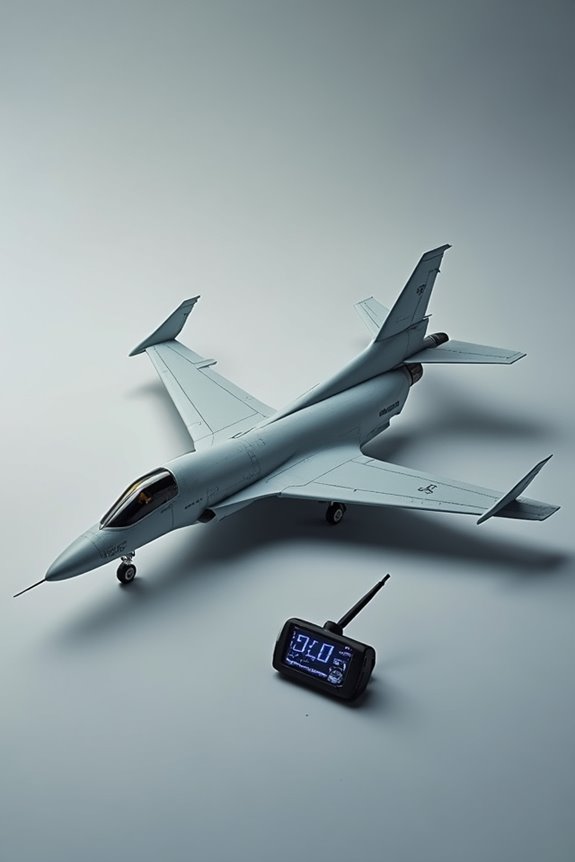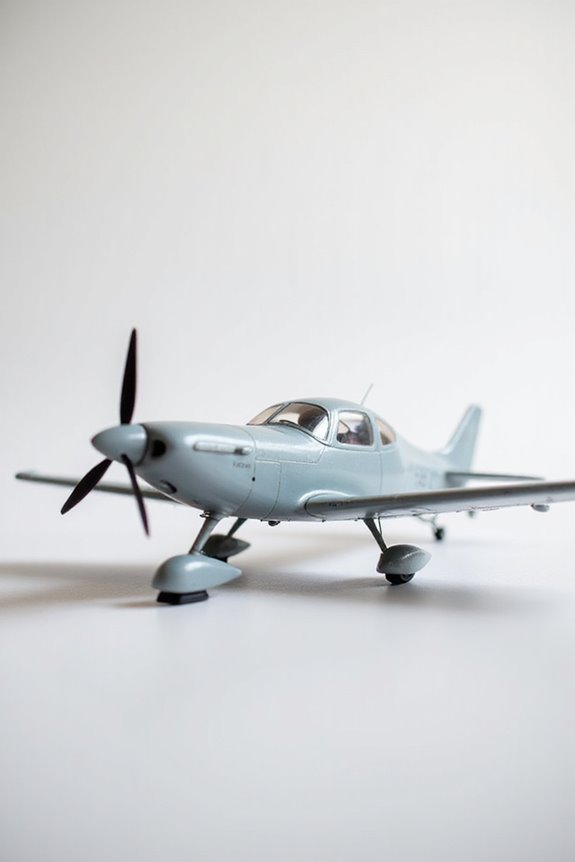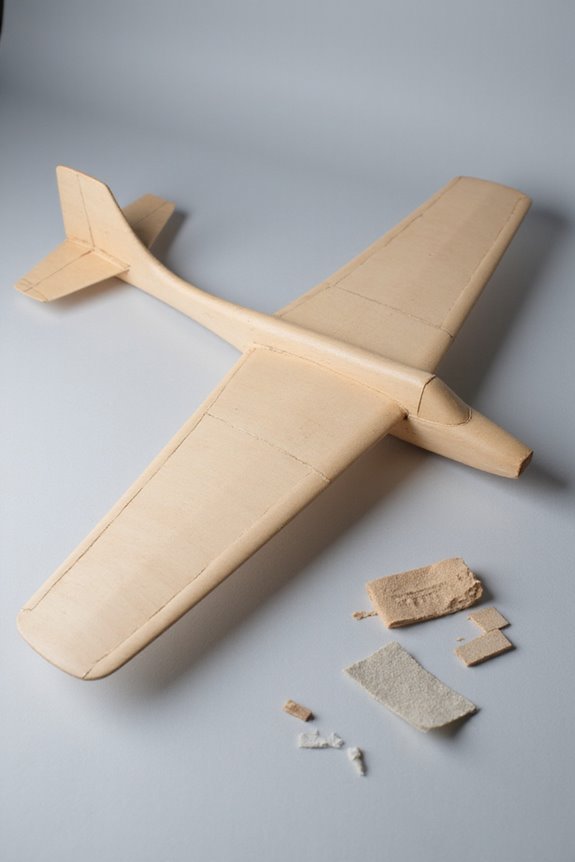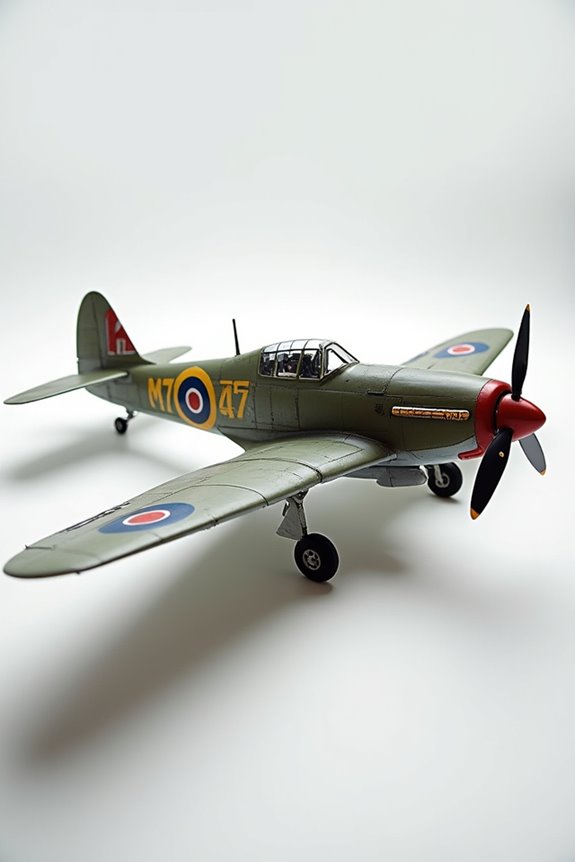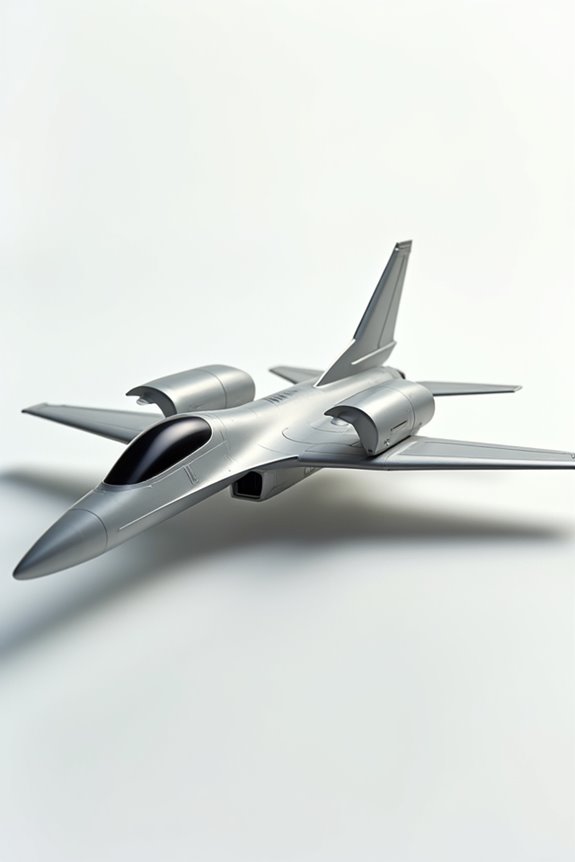To measure our RC plane’s performance, we start by tracking key metrics like electrical power input versus mechanical output. This means checking voltage and current while also measuring torque and speed. We also monitor the thrust-to-weight ratio to optimize climbing. It’s like fine-tuning a race car for maximum speed! Plus, we need to establish our flight envelope to stay safe during maneuvers. Stick around, and we’ll explore more tools and techniques for precision measurement!
Key Takeaways
- Monitor electrical power input and mechanical power output using a watt meter to analyze efficiency metrics.
- Calculate the thrust-to-power ratio to optimize performance for climbs and overall agility.
- Define the flight envelope by assessing operational limits such as airspeed and load factor during maneuvers.
- Utilize telemetry equipment for real-time data analysis, including voltage, current, torque, and motor speed measurements.
- Conduct safety inspections and ground tests to ensure proper function and maintain control during flights.
Key Performance Metrics to Track
What makes our RC planes perform at their best? To truly understand, we need to explore key performance metrics. First, we track efficiency metrics, comparing electrical power input to mechanical power output. By measuring voltage and current, we get the electrical input, while torque and motor speed give us the mechanical output.
Next, thrust calculations are essential. Thrust affects how quickly we can ascend, and understanding the thrust-to-power ratio helps us optimize our setups. We shouldn’t forget the power-to-weight ratio, either! Keeping tabs on these metrics gives us insights into our planes’ capabilities, translating into smoother flights and impressive maneuvers. In the RC world, knowledge is power—literally! Additionally, considering the KV ratings of your motor can influence your plane’s agility and performance.
Understanding Flight Envelope and Maneuvers
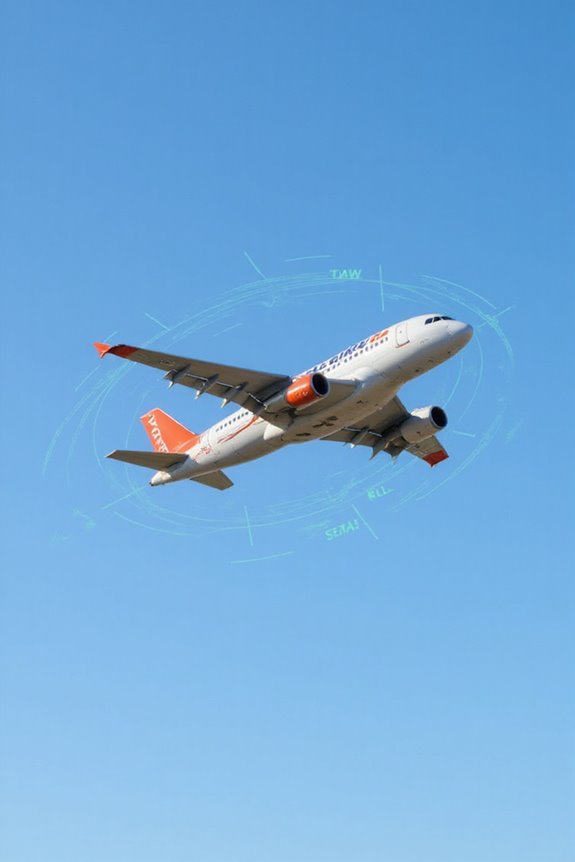
While flying our RC planes, we may not always think about the limits of our aircraft’s performance, but understanding the flight envelope is crucial for safe and fun adventures in the sky. The flight envelope defines our aircraft’s operational limits—think airspeed, altitude, load factor, and temperature. Exceeding these flight limits can lead to issues like stalls or structural failure.
Maneuver awareness is essential; when making sharp turns or steep climbs, we push our planes closer to those limits. Each maneuver alters how our aircraft responds, just like a rollercoaster ride! By knowing these boundaries, we enhance our flying experience, ensuring our planes stay with us in the sky, not trying to break any records for plummeting headfirst! Additionally, understanding automatic flight stabilization can help maintain level flight and reduce the likelihood of crashes during challenging maneuvers.
Approaches to Performance Modeling
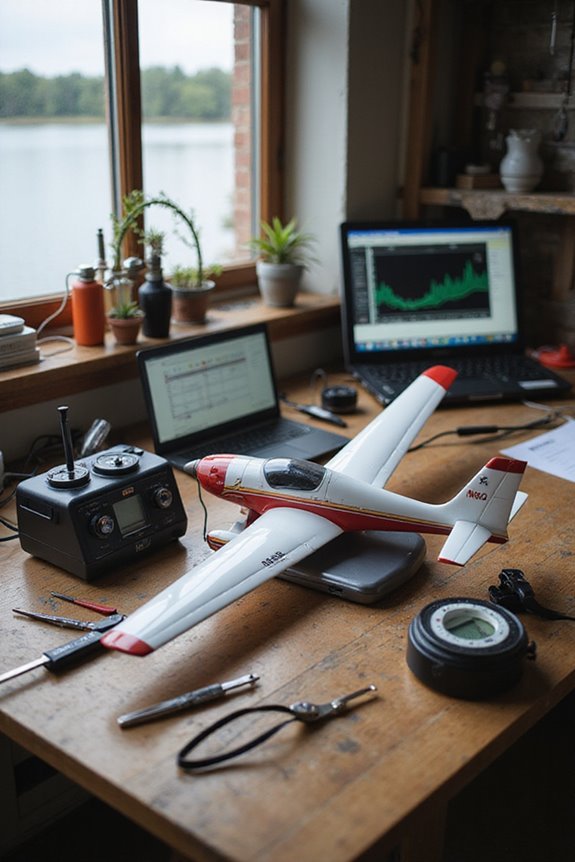
After getting a grip on our flight envelope and the limits we’re working with, it’s time to tackle how we can model our RC plane’s performance. We can start by using simplified flight mechanics equations to estimate key aspects like lift and drag. The goal? Enhancing our aerodynamic efficiency and ensuring simulation accuracy. We can also leverage software tools that allow us to simulate countless designs. Imagine running real-time simulations that consider icing—talk about putting our models to the test! Plus, refining our models by comparing predicted and actual results helps us spot discrepancies. It’s like tuning a guitar; a little adjustment here and there can make all the difference. With iterative validation, we’ll enhance our confidence in the predictions we rely on. Additionally, understanding thrust-to-weight ratios is crucial for optimizing performance and ensuring that our aircraft can climb effectively during flights.
Essential Equipment and Tools for Measurement
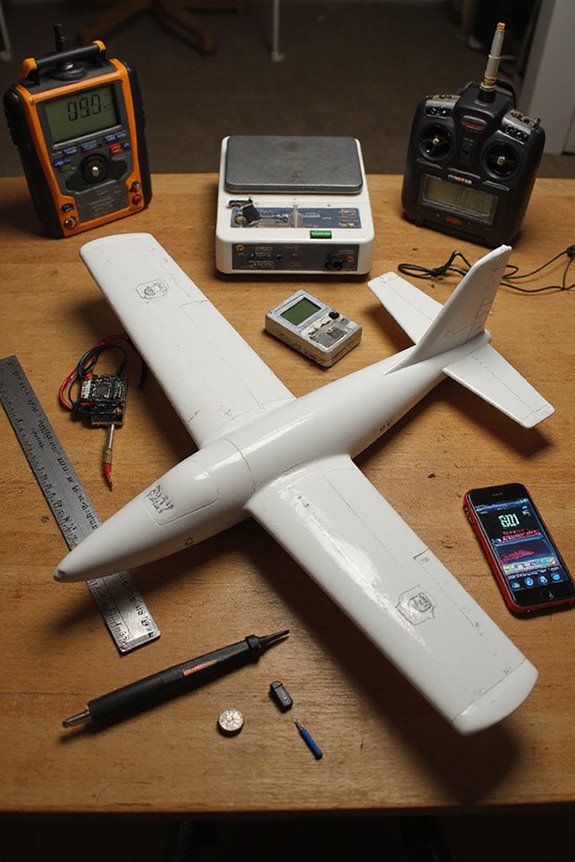
To get the most out of our RC plane measurements, we need the right tools at our fingertips. A watt meter, like the GT Power 180A, helps us monitor voltage and current, preventing pesky overloads. Plus, it verifies how well our motors and props perform before we hit the skies.
Next up is a CG scale. This nifty gadget guarantees our plane’s stability by balancing weight properly.
We can’t forget a digital caliper for precision—measuring down to hundredths of a millimeter saves us from frustrating misalignments.
A servo tester allows us to check servos before installation, making certain everything runs smoothly. Finally, telemetry equipment gives us real-time flight data, so we can soar smarter, not just higher!
Power System Optimization Techniques
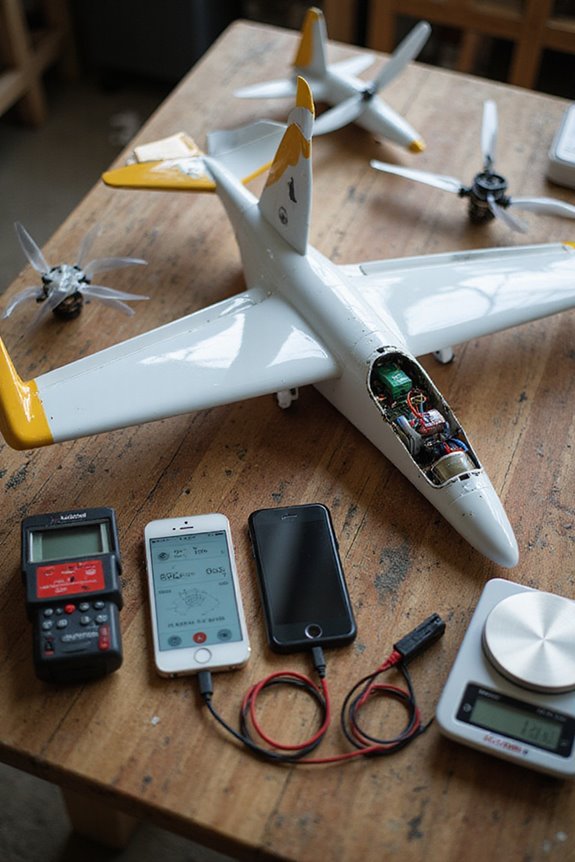
When we plunge into optimizing our RC plane’s power system, we’re really looking to finesse every little detail to make our flights smoother and more efficient. A solid start is propeller selection; adding 2 inches to the diameter of two-bladed props can boost efficiency, especially when our voltage varies. Motor selection is equally critical. We typically want motors with a Kv around 12,000 RPM for a good balance. Choosing the right propeller size is like Goldilocks finding her perfect porridge—not too big, not too small. Testing different pitches can help us hit that sweet spot of thrust while monitoring temperatures keeps our components cool. Additionally, ensuring proper voltage and current ratings contributes to optimal performance and longevity of your engine. Let’s keep things efficient and our planes soaring!
Implementing Safety and Testing Protocols
Implementing safety and testing protocols is essential for ensuring that our RC planes fly smoothly and without hiccups. We need to conduct thorough safety inspections before each flight. This means checking control surfaces, hardware, and electronics, ensuring everything is in perfect condition.
Next, let’s run some ground tests. Full-range radio checks and motor run-ups help us catch any lurking issues. It’s like giving our plane a little pre-flight pep talk.
Choosing a safe flying environment also matters; we should steer clear of obstacles and maintain distances from utilities.
During flight testing, let’s set strict “no-go” criteria. Safety isn’t just a guideline; it’s our flight plan’s backbone. After all, no one wants a surprise landing!
Analyzing Flight Data for Insights
As we immerse ourselves in analyzing flight data for insights, we uncover a treasure trove of information that can transform our RC flying experience. By closely examining our flight data, we can spot performance insights that make our planes soar and avoid those pesky crash landings.
Starting with sensor validation guarantees our readings are accurate. From altitude to engine RPM, every parameter counts. Next, we delve into data analysis using statistical techniques and qualitative methods. This helps us recognize patterns through event correlation.
Don’t forget anomaly detection! We identify those oddball behaviors that could signal trouble. Filtering out noise and organizing data into flight phases makes our analysis smoother. In the end, it’s all about flying better, safer, and with more confidence. Additionally, understanding transmission range can significantly impact our overall flight performance and capabilities.
Enhancing Performance Through Iterative Testing
Iterative testing is essential for enhancing the performance of our RC planes, especially when we’re aiming for that perfect flight. By defining specific goals for each iteration, like stall speed or cruise efficiency, we can hone in on the issues that really matter. We’ll design test cycles that progressively stress different flight regimes, gathering extensive data each time.
Using sensors to measure airflow, altitude, and control surfaces, we can track how our planes truly perform. Let’s not forget about structural integrity! Static load tests and material assessments help guarantee our design withstands the pressures of flight. With each cycle, by analyzing data and making quick modifications, our planes won’t just fly; they’ll soar! Remember, no test is too small when we’re chasing performance perfection! Additionally, incorporating essential protection features in our ESC ensures that our planes operate reliably under varying conditions.
Frequently Asked Questions
How Do Weather Conditions Affect RC Plane Performance Measurements?
Weather conditions greatly impact our RC plane’s performance. Wind resistance alters our flight path, while temperature effects decrease air density, reducing lift and thrust. We need to contemplate these factors for accurate performance measurements and improvements.
What Are Common Troubleshooting Steps for Performance Issues?
When troubleshooting performance issues, we focus on performance diagnostics during flight testing. We inspect linkages, check motor RPM, and monitor temperatures, ensuring we gather data to pinpoint any faults affecting our aircraft’s efficiency and stability.
How Can I Improve My RC Plane’s Stability?
To improve our RC plane’s stability, we should focus on optimizing flight control aspects and refining aerodynamic design. By adjusting our stabilizer size and ensuring proper center of gravity, we can achieve smoother, more balanced flights.
What Role Does Weight Distribution Play in Performance?
Weight distribution greatly impacts our plane’s performance. By focusing on proper center of gravity and effective load balancing, we guarantee better stability, control, and safety, creating a more enjoyable flight experience without unnecessary complications.
How Often Should I Recalibrate My Measurement Equipment?
We should recalibrate our measurement equipment regularly, ideally every 3–6 months, to maintain equipment accuracy. Factors like usage intensity and environmental exposure impact calibration frequency, helping us guarantee reliable data and consistent performance.

